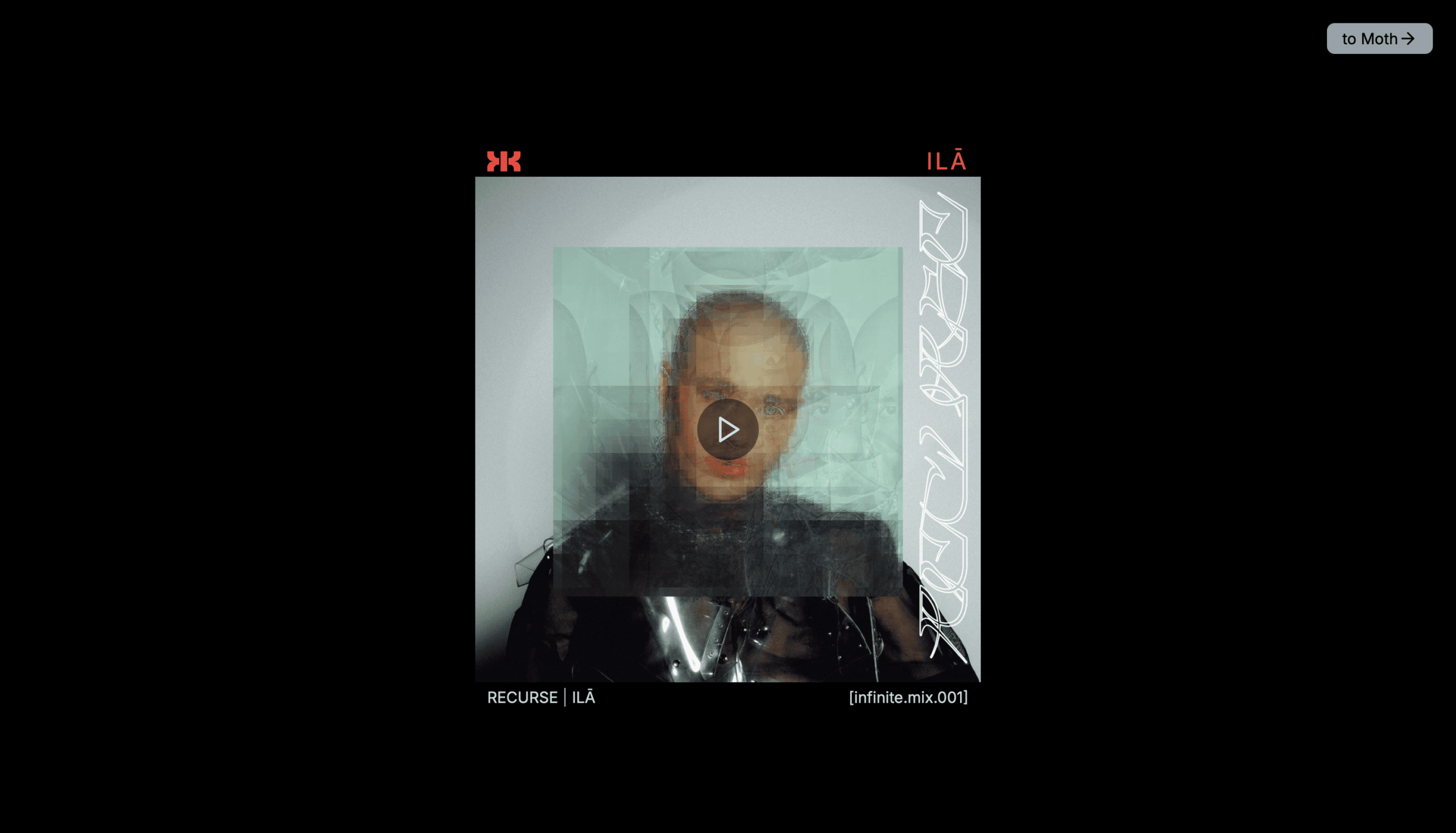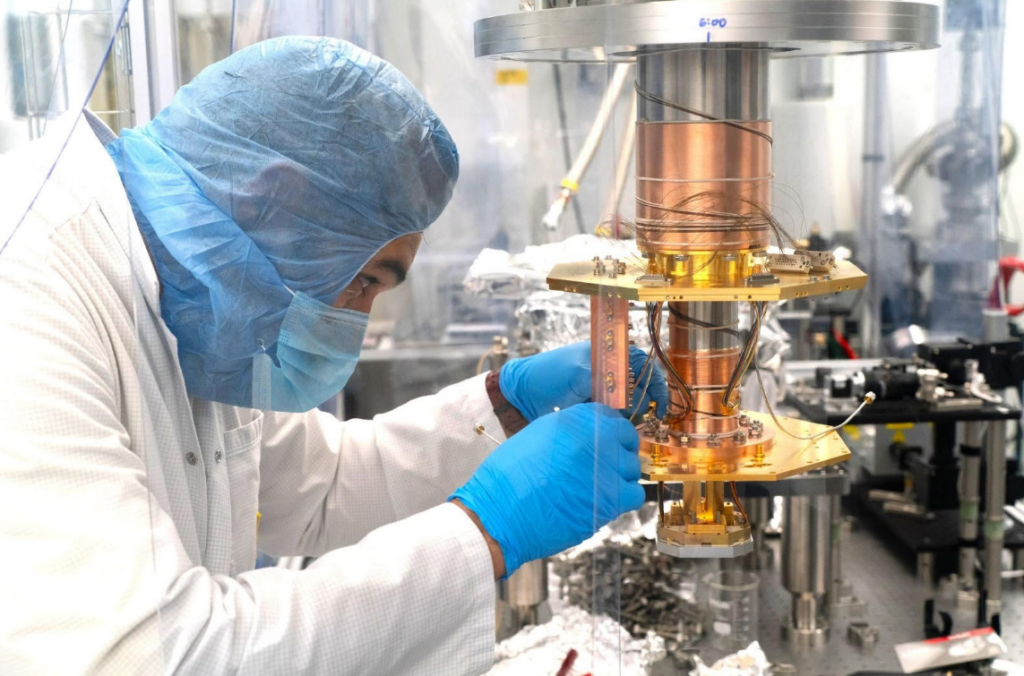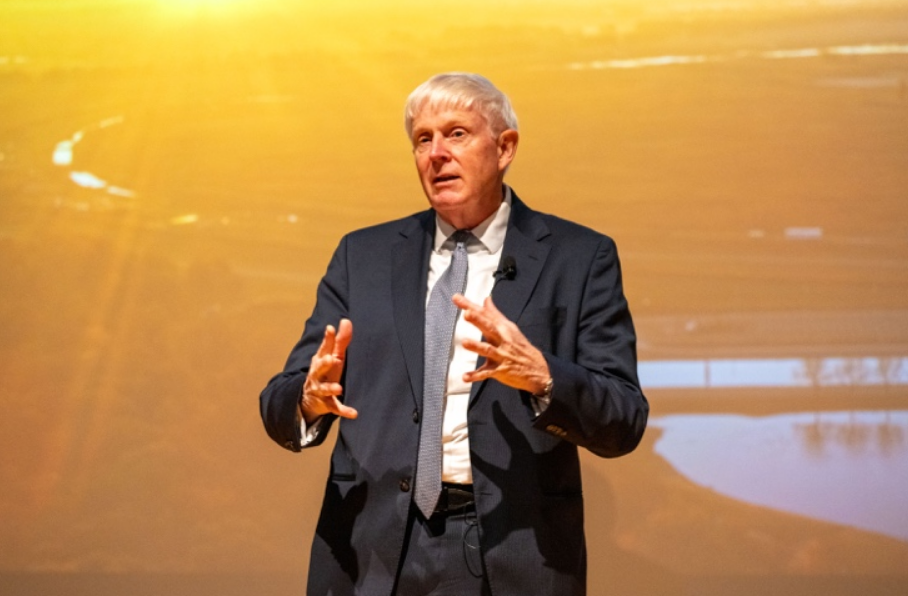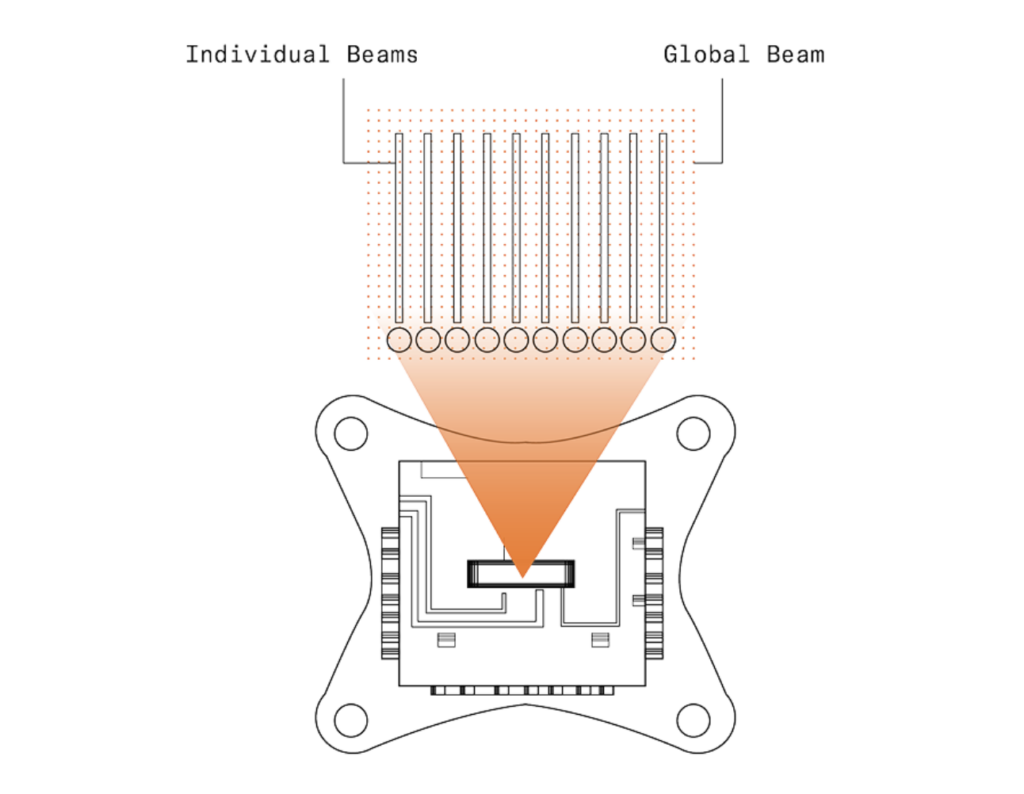Insider Brief
- A British company has released the first commercially available music track created using quantum-powered generative AI, marking the first ever consumer application of quantum computing.
- The track, titled RECURSE, was produced by MOTH in collaboration with electronic artist ILĀ using the Archaeo platform, which blends generative AI with quantum circuits
- Unlike conventional AI, MOTH’s system learns from small, artist-supplied inputs and integrates real quantum hardware, protecting the artist’s ownership and enhancing originality.
A British technology company reports it’s laying down the world’s first commercially available music track created using quantum-powered generative AI. It’s a move that might just pull quantum science out of the lab and into studios and concert halls, all while opening new opportunities for artists and reshaping consumer applications for quantum computing.
MOTH, a London-based company with a significant technical presence in Basel Switzerland, collaborated with electronic artist ILĀ to create “RECURSE,” a track built using the company’s proprietary Archaeo platform. According to MOTH, Archaeo combines traditional generative AI with parameterised quantum circuits to help artists create music without relying on massive datasets scraped from the internet. The system learns from small, artist-supplied inputs, aiming to protect creative ownership and originality and also highlighting the inherent advantage of quantum information theory that posits enormous degress of freedom in embedding information compared to classical computing methods.
The track, which will be released on all major streaming platforms on May 2, will also be showcased through a 24/7 online stream called “RECURSE [infinite mix],” a unique evolving, real-time version of the musical experience.

A Defining Moment
Dr. Ilana Wisby, CEO of MOTH said: “This is a defining moment – not just for MOTH, but for the future of creativity itself. RECURSE demonstrates the power of quantum AI to support and enhance, and not just take from, artists. It’s a blueprint for a new kind of creative technology – one that’s driven by imagination, rooted in ethics and designed to serve artists, not replace them. “With Archaeo, we’ve supercharged generative AI by plugging a quantum capability into the engine room empowering artists like ILĀ to break new creative boundaries in ways never before possible.”
Unlike conventional AI models that remix and extrapolate from vast pools of existing data, MOTH said its quantum approach is rooted in possibility rather than prediction. Traditional AI is described by the company as refining patterns from the past, while quantum systems, being inherently non-deterministic, generate new and unexpected outcomes. MOTH said this difference offers artists the ability to break away from the repetitive tendencies of AI-generated content and push creative boundaries.
“AI predicts what’s likely. Quantum reveals what’s possible. That’s the future we’re building. Archaeo isn’t just another generative AI tool – it’s a quantum-powered engine for creativity,” said Wisby.
Central to the development of “RECURSE” was MOTH’s collaboration with ILĀ, who provided original audio inputs, according to the company. These were used to train a customized AI model through a plugin integrated into the artist’s Ableton workflow. The AI generated MIDI sequences for key musical elements such as bass, synth, and drums, but ILĀ maintained full artistic control over the instrumentation, effects, and final arrangement. To enhance the output, the system tapped into quantum hardware from IQM Quantum Computers, creating a hybrid creative workflow that blended classical and quantum techniques.
Quantum Reservoir Computing
Archaeo is built on an advanced form of quantum machine learning known as Quantum Reservoir Computing (QRC), an architecture that allows the software to recognize and replicate subtle musical patterns, according to Moth. The approach was developed with input from Professor Eduardo Miranda, a specialist in music and artificial intelligence.
Archaeo represents a new type of collaboration between artist and algorithm, offering a different path from most current AI music platforms. While concerns are rising among artists about AI models that draw from copyrighted work without permission, MOTH’s system was intentionally designed to respect ownership, using only small, high-quality datasets developed with the creator’s consent.
Consumer-Facing Products For Quantum
MOTH’s move comes as quantum computing, long confined to specialized sectors like finance, pharmaceuticals, and cybersecurity, begins making its way into consumer-facing products. While most applications of quantum technology are still in research phases or limited to industrial settings, MOTH positions itself as an early player aiming to make quantum computing useful and accessible for everyday creative work with applications that exist today and which have the ability to touch the lives of ordinary people with a ‘no-code’ interface and value that is immediately obvious.
Beyond music, the company suggests Archaeo’s capabilities could be applied across gaming, digital media, and art, aiming to transform all creative industries by offering new tools that expand rather than constrain human imagination. MOTH has previously demonstrated its platform’s flexibility by using it to generate Super Mario Bros. game levels with the same generative quantum process.
The launch of “RECURSE” also marks a new chapter for MOTH itself. Before being appointed, Wisby led Oxford Quantum Circuits and helped it raise $100 million in Series B funding while establishing the UK’s first commercially available quantum computing platform. MOTH describes itself as the world’s first Q2C – quantum-to-customer – technology company focused on building real-world, consumer-ready applications.
Enhance Creatives, Not Replace
ILĀ, whose interdisciplinary work spans collaborations with Grammy-winning artists and projects for the European Space Agency and the World Economic Forum, is among a growing number of artists exploring the creative use of emerging technologies. Their involvement in “RECURSE” reflects a broader movement where artists seek tools that enhance originality rather than replace creative roles.
ILĀ said:“Working with MOTH’s technology was a fascinating experience and has helped me create something genuinely new which feels like it’s pushing boundaries. As a tool it focuses on expanding creative possibilities rather than simply replacing the artist. This feels very much like a collaboration — working with a technology that’s pushing me to do new, interesting and surprising things. This is a big step away from standard AI tools which generate the average of averages and are creating a kind of ubiquity in sound and music. It feels very refreshing to use a technology that has been built to work with you — not simply replace you. This approach produces something much more human led which feels more authentic in creative terms.”
MOTH’s partnership with IQM Quantum Computers, a maker of superconducting quantum computers, helped with the integration of real quantum hardware into the workflow. IQM provides access to its systems through both on-premises setups and cloud platforms and serves research labs, universities, and enterprises across Europe and Asia.
As MOTH expands its reach into the consumer market, it hopes to prove that quantum computing can go beyond abstract research and offer tangible benefits for everyday creators. The company’s leadership believes that by giving artists tools rooted in possibility rather than prediction, quantum technology could help unlock a new era of human-machine collaboration across industries.
Founded two years ago by Harry Kumar and Ferdinand Tomassini, Moth has largely operated in stealth mode until now, and in addition to newly arrived CEO Wisby, boasts IBM quantum veteran James Wooton as its Chief Scientific Officer, and New York based Spencer Topel as CTO. Moth also has quantum music pioneer Professor Eduardo Miranda as an advisor, and is reportedly backed by Ilyas Khan, the founder of Quantinuum and Singapore based Serendipity Capital.
“This project is a demonstration of how quantum computing can enhance everyday tools and workflows,” said Wisby. “We’re not just building tech for tech’s sake, we’re building tools that empower, inspire, and drive a new era of media and creativity.”

















